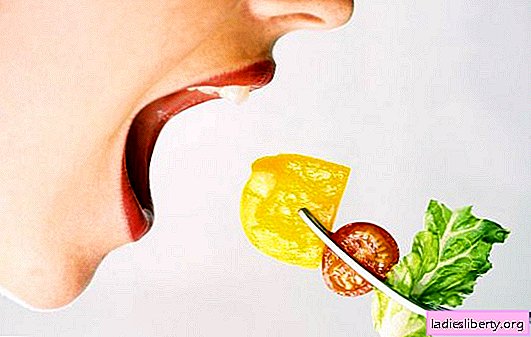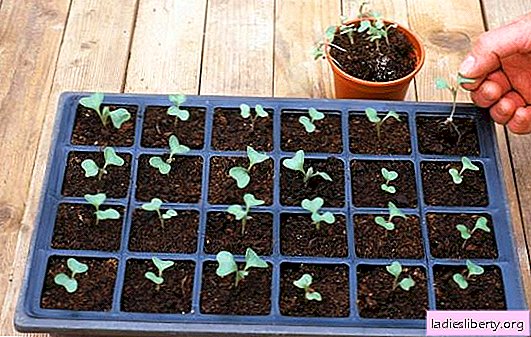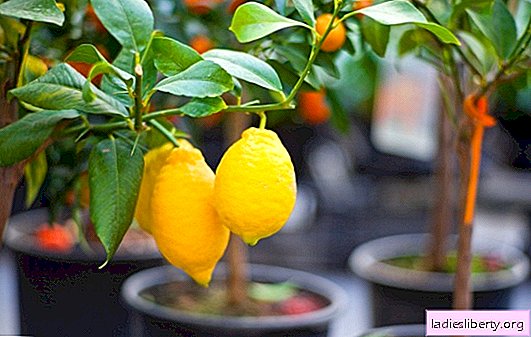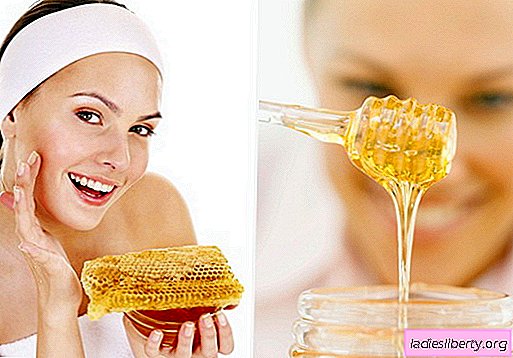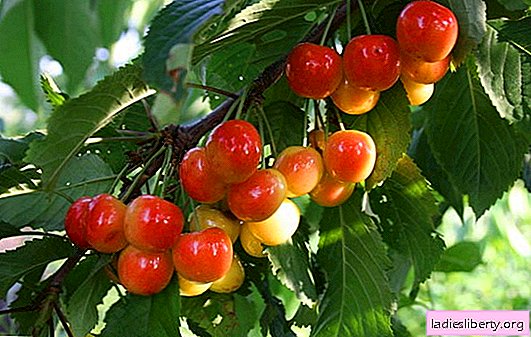
Sweet cherry is a tall-growing tree for which a height of ten meters is not the limit.
It begins bearing fruit in the fifth or seventh year.
It starts producing industrial crops from ten to twelve years.
Refers to crops with poor shoot-forming ability.
Without pruning, trees are enormous. The natural shape of the crown is sparse, with ankle bare branches.
Cherry is usually formed on a sparse-tier system. Upon entering full fruiting, a tree of this design reaches 5-6 meters. Harvesting from this height can be very difficult. At the same time, the crop remains not harvested at the crown.
There are various methods for limiting the growth of cherries. This is the cultivation of undersized varieties, the use of dwarf rootstocks, pruning.
How to cut sweet cherries
Crown formation
The formation of the crown of a tree includes various techniques:
• pruning;
• correction of the angle of departure of the branches;
• green operations;
• stimulation of the growth of branches in the right place.
Trimming Dates
The traditional pruning time is early spring before the buds swell. This operation should only be performed in warm, dry weather. It is believed that you must definitely meet the deadlines.
However, it turns out that cherries can be cut later. There are many advantages to late pruning: wounds are better healed, the tree is less affected by gum-cutting. Sweet cherries tolerate summer pruning. It can be carried out immediately after harvesting. The main thing is that the young shoots that grew in the summer have time to lignify and not freeze in the winter.
Cherry pruning techniques
Shortening annual growth
The generally accepted technique. It is used in many formations of cherries, including sparse-tier. It is especially often used in the first years after planting trees. However, shortening may delay the onset of fruiting. The tree spends its energy not on laying the future harvest, but on young branches, since shortening causes the growth of numerous shoots. In intensive horticulture, young trees are pruned minimally to speed up the beginning of their fruiting.
Limiting tree growth in height or Brunner's method
Allows you to gradually remove or weaken strong vertical branches without damage to the tree.
This method is as follows:
A strongly growing vertical branch is shortened by half;
The horizontally oriented branch located below is shortened to two or three buds.
The purpose of this operation is to cause the growth of strong shoots on the upper branch, pulling the growth energy from a thin branch to a thicker one. When new shoots reach a length of 20-25 cm on a vertical shortened branch, the growth is completely removed. This technique allows you to get rid of too strong shoots without stimulating the excessive growth of newly growing branches.
Anti-aging pruning
It causes the growth of young shoots with a decrease in growth of the current year. Together with the old branches, part of the flower buds is removed. This unloads the tree and improves the quality of the fruit.
Trimming with translation to the side branch

Anti-aging pruning is used in all crown formations, especially when the branches grow up or hang too down. Anti-aging pruning allows replacing old branches in the crown with young ones. There are two methods of anti-aging pruning:
• If the branch does not have lateral branches, it is cut into a spike with a length of two to several tens of centimeters. Of the newly grown shoots, choose one that replaces the shortened branch. The rest are deleted. This pruning method is applicable in all formations to produce high quality fruits.
• If there is a new shoot on the shortened branch, which is left for further growth, the cut is performed slightly higher from its base. The rule should be observed so that the growth point of the left branch is higher than the cut.
Thinning sweet cherry
With the growth of trees in the crown, many branches form that impede the penetration of sunlight into the inner and lower parts of the crown. This leads to their death.
To create a better light regime, thinning is performed inside the crown.
In this case, thickening branches, tops or shoots are completely removed. Recently, branch removal has been practiced with leaving a knot.
Thinning can be carried out without removing, but shortening the branches. Weaving, rubbing, closely spaced, parallel, vertical branches are cut.
The slice is made above the side branch directed into the free space. The removal of branches is carried out in such a way as to increase the penetration of light inside and to the lower branches of the crown. Therefore, thinning of the upper part of the crown is carried out especially carefully.
This method of pruning practically does not affect the growth power of new shoots and does not delay the onset of fruiting. It is used in all formations of cherries.
Kidney removal
To prevent the growth of shoots in an undesirable place, the kidneys are removed. This is, first of all, the removal of germinating buds on the stem for all systems of formation of fruit trees.
Bending off shoots and branches
Sweet cherries are prone to growing branches extending from the conductor at sharp angles.
In the forks with such departure angles, the tissue dies, and the connection with the trunk is weakened, which can lead to breaking of the branches. In the places where the branches leave, an infection is often settled that can cause them to dry out.
To increase the angles of departure, the branches are bent.
This procedure facilitates the penetration of light into the crown and accelerates the entry of trees into the fruiting season.
Bending branches begin on young seedlings planted in the garden. Fix grassy shoots about ten centimeters long. To do this, use clothespins or toothpicks. Clothespins are attached to the barrel, giving the shoots a horizontal position. Toothpicks are used as spacers between the center conductor and the twigs.
Bending shoots with toothpicks

After two weeks, the clothespins are rearranged at the ends of the shoots so that they continue horizontal growth.
Annual branches are bent with the help of special devices - weights, braces and elastic bands to obtain the necessary angles.

In the absence of special devices, to increase the angle of departure, the branches are fixed by tying them with a rope to stakes or hooks hammered into the ground or to the trunk of the tree itself. Be sure to monitor the attachment points of the twine. As the cherries grow, they need to be weakened so that they do not damage the boles and branches.
Summer operations
Green operations are widely used in intensive gardening. With their help, the formation of the crown is accelerated, the beginning of fruiting is approaching, the yield is increasing. During summer pruning, cherries do not suffer from gum disease. Wounds heal quickly and well. How to cut sweet cherries in summer?
The list of recommended green operations:
• pinching (plucking or cutting young shoots);
• tweezers (or pinching - removing the top of the green shoots);
• summer pruning (complete or partial removal of young lignified growth).
The main part of these techniques is used on growing green shoots, which is why it is called "green operations".
In addition to the above, in intensive horticulture in summer, the following techniques are widely used:
• deviation of branches and growing shoots to a horizontal position;
• removal of perennial branches with the aim of thinning crowns to improve lighting.
Crown formation methods such as breaking of shoots and their deformation are also used.
Wounds after breaking shoots and deformations heal well

Many countries with developed gardening have completely switched to summer pruning.
During summer, much less wood is removed during pruning than during pruning. The consumption of nutrients in wood is saved.
Cherry Formations for Intensive Gardens
The traditional design of the crown of cherries is sparse-tiered. At present, intensive formations have been developed in intensive gardening to reduce the height of trees even on tall rootstocks.
In addition to sparse-tier, the following cherry formation systems are used:
• Vogel;
• stop leader;
• bowl;
• flat palmette;
• Spanish bush.
All types of crown formation operations are aimed at the early entry of trees into fruiting and obtaining a high yield. This also applies to pruning during dormancy and summer green operations. How and in what time frame to cut the sweet cherry is decided by the owner of the garden.

